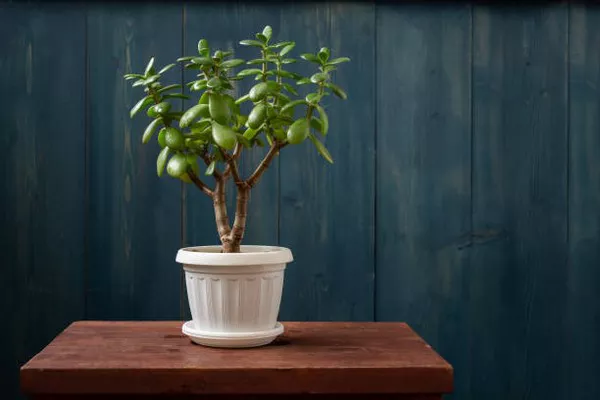Jade plants, scientifically known as Crassula ovata or commonly referred to as “money trees” or “lucky plants,” have been a favorite among indoor gardeners for generations. Their easy care and unique aesthetic make them a popular choice for both beginners and experienced gardeners alike. One of the intriguing aspects of jade plants is their potential for growth. In this article, we will explore the factors that influence the size of jade plants and provide insights into just how big they can grow.
Understanding Jade Plant Growth
Before delving into the question of how big jade plants can grow, it’s important to understand the factors that influence their growth. Jade plants are succulents native to South Africa, and their growth is determined by a combination of environmental conditions, care, and genetics.
Genetics: Like all living organisms, jade plants have a genetic predisposition that dictates their potential size. Some varieties of jade plants naturally grow larger than others. While it is possible to prune and shape your jade plant to some extent, it’s important to remember that genetics play a crucial role in determining the ultimate size of your plant.
Environmental Conditions: The growth of jade plants is highly responsive to their environment. Key environmental factors include light, temperature, humidity, and the quality of the soil. These conditions can vary based on the location where you are growing your jade plant, and they will influence its growth rate and ultimate size.
Care and Maintenance: The care you provide to your jade plant is one of the most significant factors influencing its size. Factors like watering, fertilization, and pruning all impact the plant’s overall health and growth potential.
Now that we understand the factors affecting jade plant growth, let’s explore how big jade plants can actually grow.
How Big Can Jade Plants Grow?
The size of a jade plant can vary widely depending on the factors mentioned above. On average, a fully matured indoor jade plant will reach a height of 2 to 3 feet (60 to 90 cm) and spread to about 2 feet (60 cm) in width. However, under the right conditions, and given time, jade plants can potentially grow much larger.
Environmental Factors
a. Light: Adequate sunlight is essential for the healthy growth of jade plants. In their native habitat, jade plants receive full sun exposure. When grown indoors, they require bright, indirect sunlight to thrive. If your jade plant receives insufficient light, it may become leggy and fail to reach its full growth potential.
b. Temperature: Jade plants are hardy and can tolerate a wide range of temperatures, but they prefer average room temperatures. Extreme fluctuations in temperature can stress the plant, affecting its growth. In cooler climates, they may grow more slowly, while in warmer environments, they may grow more rapidly.
c. Humidity: Jade plants are not particularly sensitive to humidity levels, and most indoor environments offer suitable conditions. However, maintaining moderate humidity can help prevent common issues like mealybugs or powdery mildew that might affect growth.
Care and Maintenance
a. Watering: Overwatering is a common mistake when caring for jade plants. These succulents are adapted to store water in their leaves and prefer to dry out between watering. To encourage healthy growth, water your jade plant sparingly, allowing the soil to dry thoroughly before each watering. The frequency of watering will depend on factors like the pot size, humidity, and environmental conditions.
b. Fertilization: Jade plants benefit from occasional fertilization during their growing season, typically spring and summer. A balanced, liquid-soluble fertilizer diluted to half strength is recommended. Over-fertilization can lead to excessive growth and leggy, weak stems, so it’s essential to use fertilizers sparingly.
c. Pruning: Pruning is a useful technique to control the size and shape of your jade plant. Regular pruning can encourage a bushier and more compact growth habit. While pruning can be used to maintain a smaller plant size, it can also promote overall health and vitality.
Genetics
As mentioned earlier, the genetic makeup of your jade plant plays a significant role in determining its ultimate size. Some varieties of jade plants are naturally larger and more vigorous than others. It’s important to research the specific type of jade plant you have or plan to purchase to get an idea of its growth potential.
Age
The age of a jade plant also impacts its size. Young plants will naturally be smaller, and their growth rate will slow down as they mature. With proper care and a bit of patience, your jade plant can reach its full size potential over time.
Conclusion
In conclusion, the size of jade plants can vary significantly based on environmental conditions, care, and genetics. On average, indoor jade plants reach a height of 2 to 3 feet, but they can potentially grow larger under the right conditions. To maximize the growth potential of your jade plant, provide the appropriate environmental conditions, care, and maintenance it needs.
Remember that while jade plants are hardy and can thrive in less than ideal conditions, optimal care will result in a healthier and more vibrant plant. Whether you’re nurturing a small potted jade plant or hoping for a larger, more majestic specimen, understanding the factors that influence growth is the key to success. With the right approach, your jade plant can flourish, bringing beauty and good fortune to your indoor garden.


